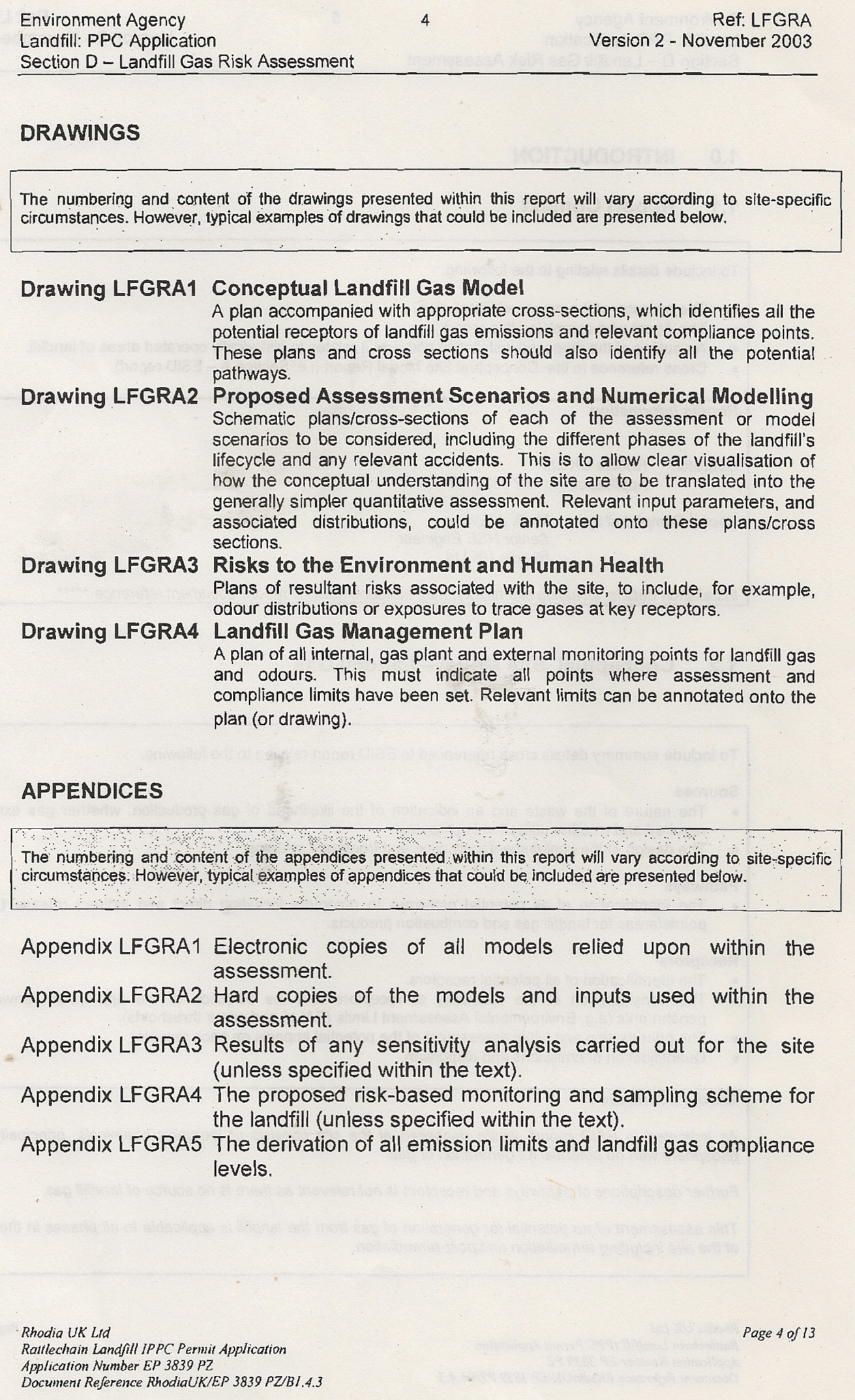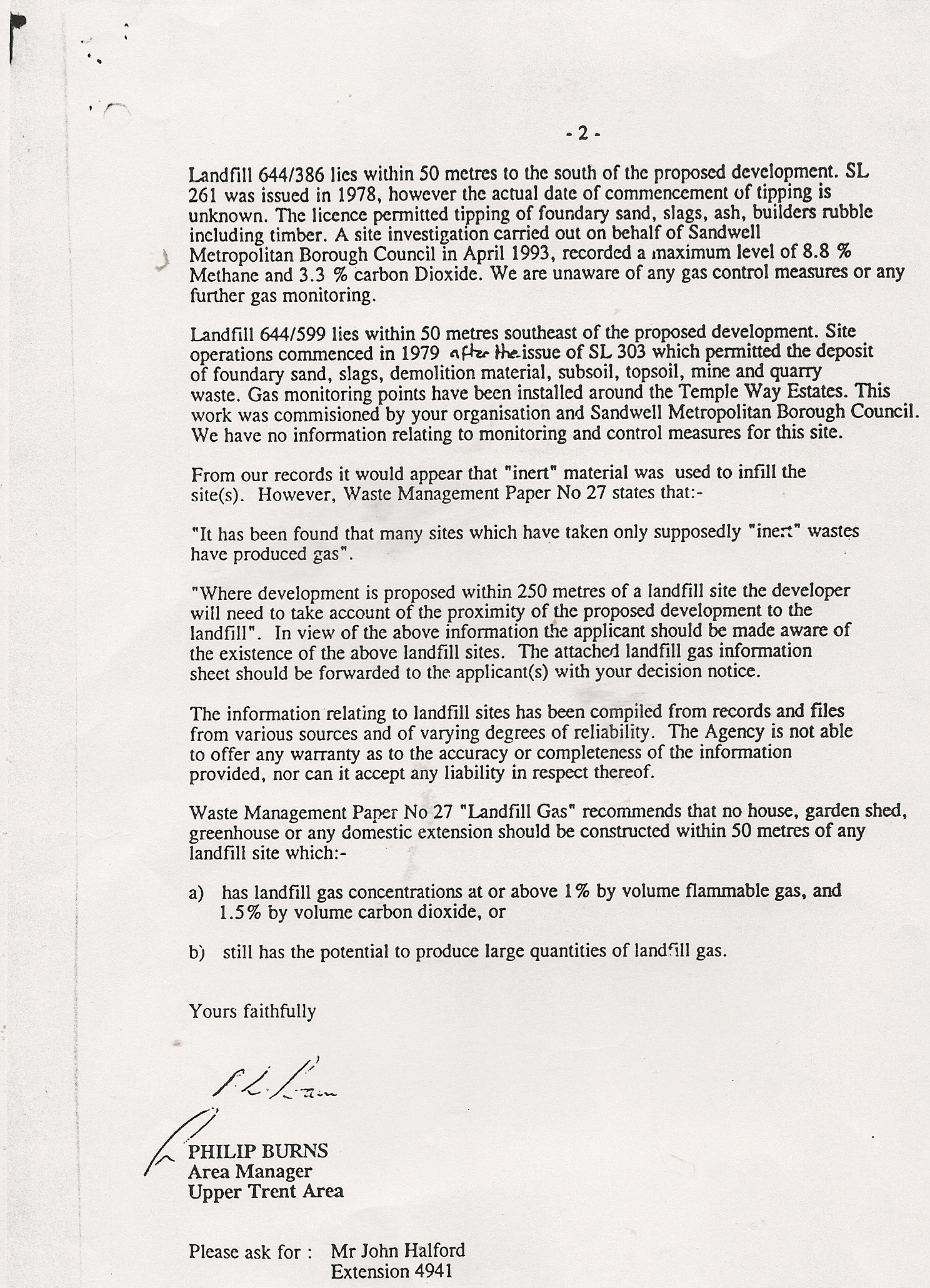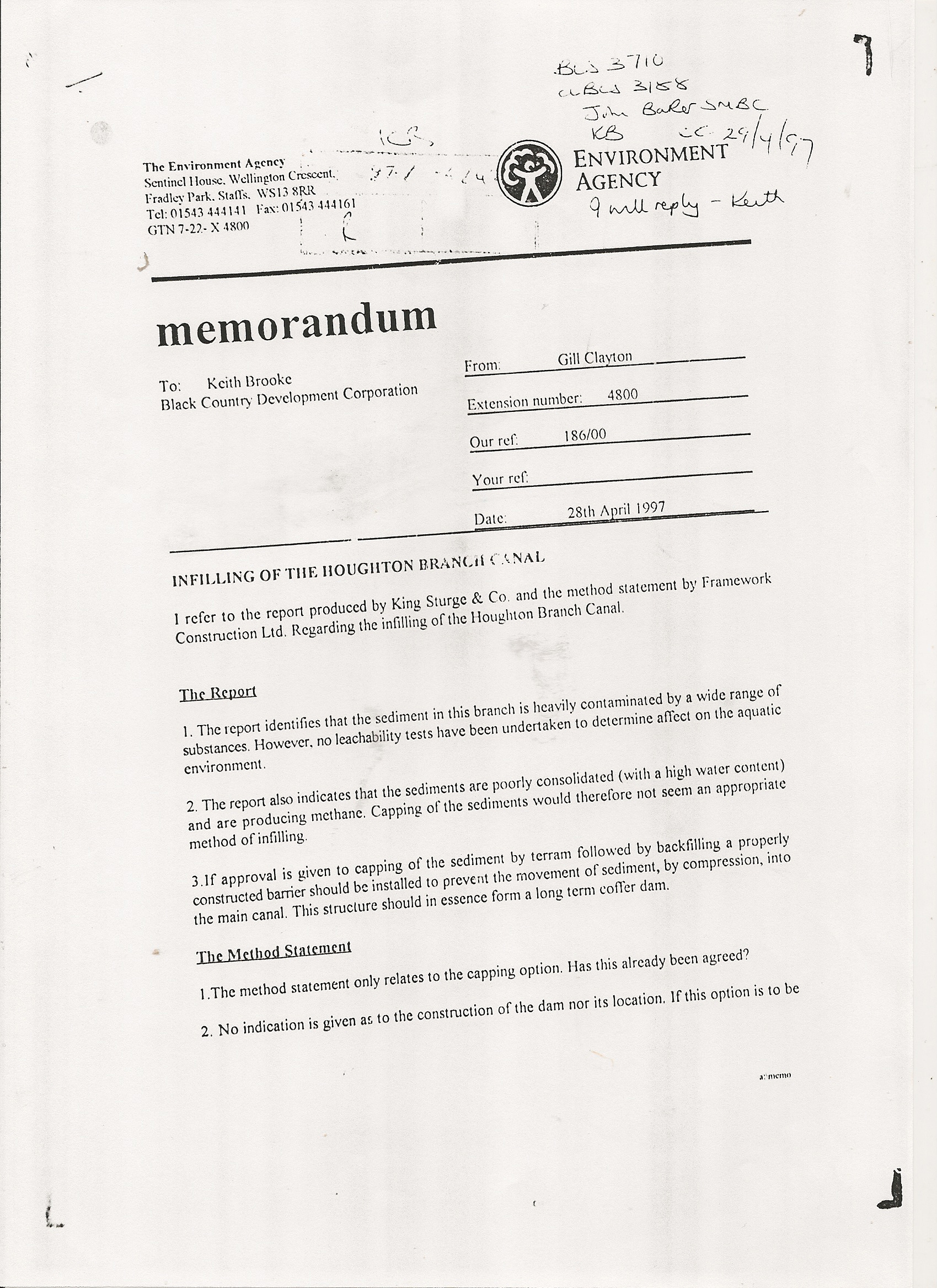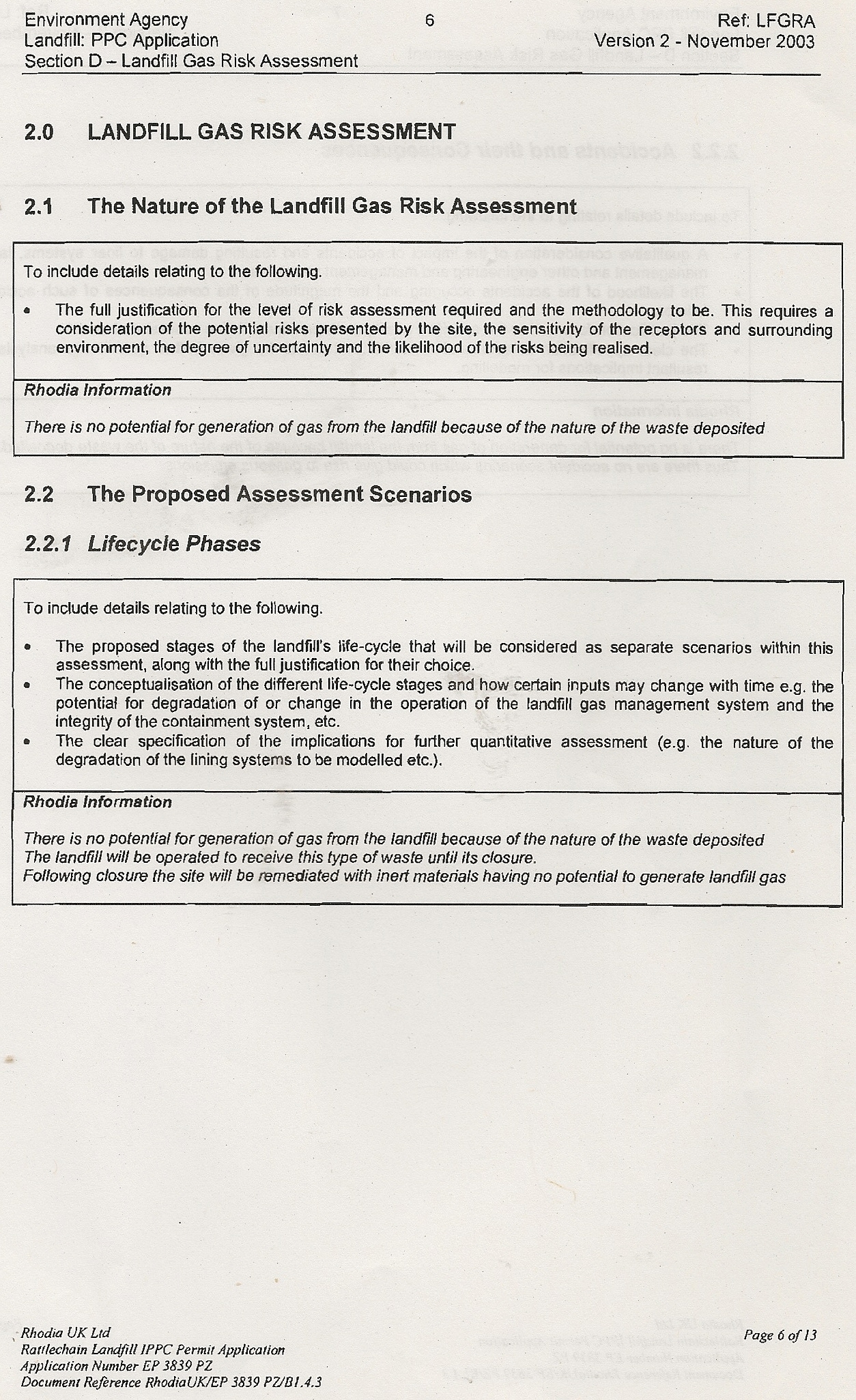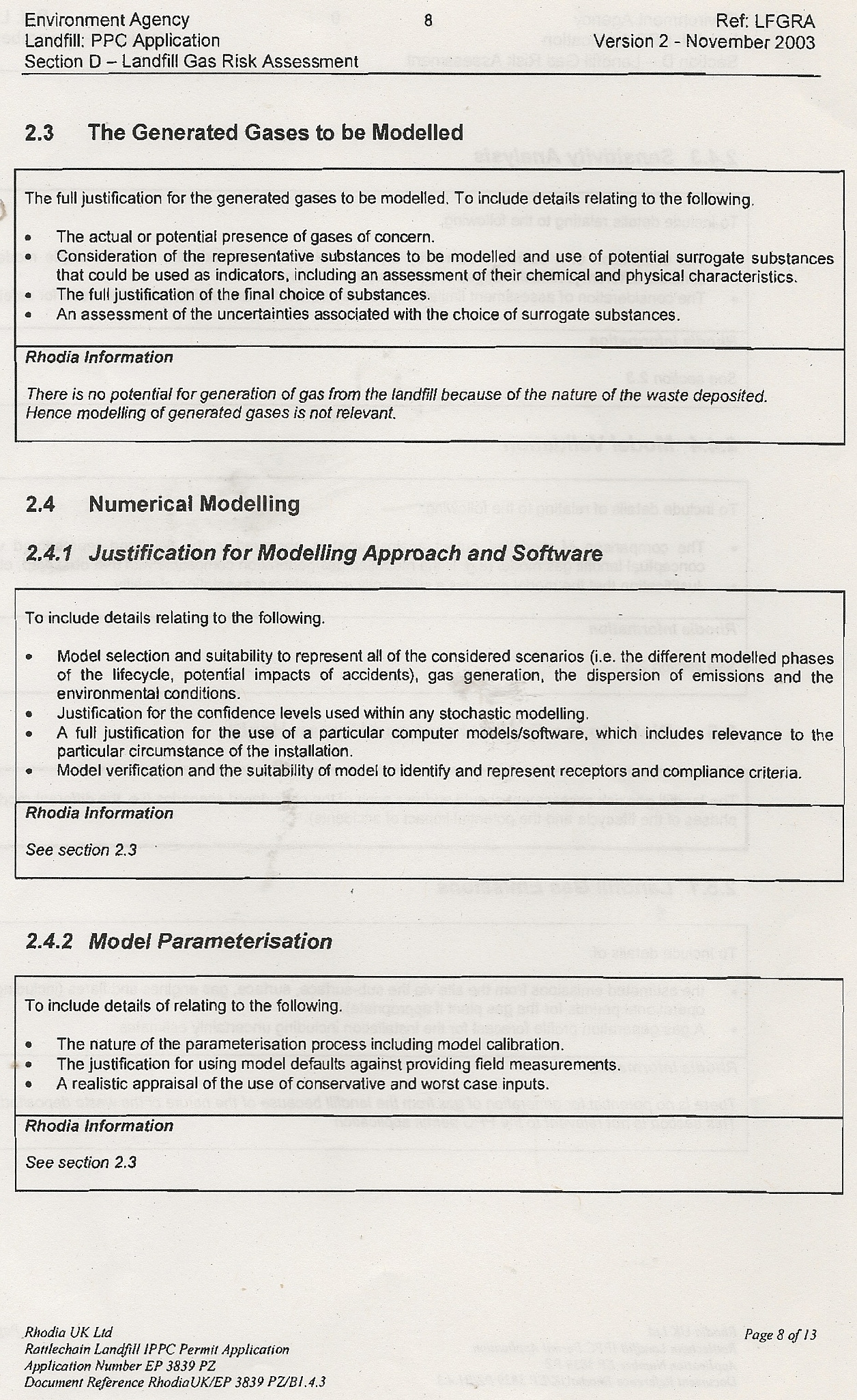In 1914, Charlie Chaplin starred in a 16 minute short silent film titled “laughing gas”.
Le petomane was a French performer noted for his unusual talent for inhaling air and expelling it from his anus. He did not actually produce natural gas from his orifice rather recycle air using his internal muscles.
In 2003 French owned Rhodia UK Limited provided a remake script for The Environment Agency as part of their Closure report for the Rattlechain Site. Like Le Petomane they appeared to have an unusual talent of not producing methane from their factory anus (the lagoon),but something in writing that stank of rotten eggs. Unlike the former film, this document did not deal with nitrous oxide used notably in dentistry but rather Rhodia’s assessment of the potential for landfill gas generation. It is “laughable” in terms of the conclusions which it makes “There is no potential for generation of gas from the landfill because of the nature of the waste deposited. Thus there are no accident scenarios which could give rise to gaseous emissions. “
WE BEG TO DIFFER. Indeed we believe that whoever wrote this epistle for Rhodia must have been on some at the time enjoying its analgesic properties, and if the Environment Agency accepted their story, must have been sharing in the light headed experience. The lagoon is classified as “a hazardous waste” landfill.
The Environment agency have published “Guidance on the management of landfill gas.”
This document identifies matters relating to The Landfill Directive.
“The Landfill Directive sets out three classes of landfill:
● landfill for inert waste
●landfill for non-hazardous waste
●landfill for hazardous waste.
NB Rattlechain lagoon is classified as “a hazardous waste” site by the Environment agency.
The Landfill Directive provides minimum requirements for the design and operation of all classes of landfill, including landfill gas control. It defines landfill gas as ‘all the gases generated from landfilled waste’.
Based on this definition, landfill gas includes gases generated by the biodegradation of waste and those arising from chemical reactions and the volatilisation of chemicals from the waste.”
This document also notes
“For existing sites, previous deposits of non-inert waste introduce a greater level of complexity and may require a more detailed level of assessment.”
The following “notes on landfill gas” are an Environment Agency written document and provide some further explanation.
The first four pages of the enclosed EA template document below offer guidance for the landfill operator to follow in order to be compliant with the legislation. It is clear from reading this together with the previously displayed EA notes that there is much theory behind why it is necessary to follow this guidance, and practical measures need to be taken by operators to reduce the chances of harm to the environment and human health.
As part of their closure report for the site, Rhodia were required to answer the following criteria.

Rhodia’s “assessments” are shown in the replies below.
This assessment is ludicrous.
- The historic waste deposited is not “inorganic”. Once again we are presented with the longstanding myth of calcium phosphate. There is no mention of the fact that any waste organic and inorganic was deposited before the waste licensing regime.
- The quoted ESID report source can be found at section 2.4 of the URS report for Rhodia
“2.4 Landfill gas management.
The waste disposed to the site comprises an inert calcium phosphate slurry, which does not produce landfill gas.”
We therefore have a situation wherby the Environmental consultant’s report submitted as part of the closure plan and informed by information supplied by the client- is then regarded as being the informative source by that same client with regard to the landfill gas conceptual site model. Furthermore at section
“4.6 Off site landfill gas monitoring
Off-site landfill gas monitoring has not been undertaken as part of the previous operation of the site (refer Section 2.4.) URS and Rhodia are not aware of the existence of off-site gas monitoring data for the adjacent landfill site to the East.”
By this site they are refering to “Duport’s tip” – a marl hole dug when the rattlechain brickworks site expanded to the East and Albright and Wilson acquired the one left behind. When the brickworks closed, the newer abandoned hole received a wide mixture of putrescible materials and toxic industrial wastes mixed with foundry sands. Foundry sands commonly exhibit elevated levels of C02 because of organic binders found in the material. This is one of the main reasons why this material could not be used for infilling Rattlechain lagoon.
The following Environment agency letter from 1997 submitted as part of the first application to build houses on the former sewage works site provides some interesting background to both the Rattlechain lagoon site and other landfills within the immediate area. Of Rattlechain lagoon “Landfill site 644/60, is within 50 metres to the North of the proposed development. This site is currently licensed (SL31) for the disposal of elemental phosphorus and phospherous (sic) sludge into a lagoon. We are not aware of any gas monitoring or control.”
- There is no mention of the fact that the waste originated from the Houghton chemical arm- a canal found to have been polluted significantly by organic material and whereby an Environmemt agency officer issued the following statement concerning methane gas generation.
“The report also indicates that the sediments are poorly consolidated with a high water content and are producing methane. Capping of the sediments would therefore not seem an appropriate method of infilling.”
- There is no mention of The British Waterways uncontrolled industrial scale barge tipping from the surrounding industrially polluted BCN network. These industries created significant sulphate based chemicals ,which increase levels of landfill gas.
- We have directly observed the emission of gas rising to the surface of water in the beach area of the lagoon, in the presence of Rhodia staff. When asked about this they replied “yes it’s just methane”.
- There is a source of landfill gas. This statement is remiss of this company and their regulator if this is accepted as a truthful account.
- The assessment of generation of landfill gas after remediation is even more ludicrous. The generation of phosphine gas has been another source of denial from this company and their environmental consultants. If white phosphorus is present in the sediments- AND WE KNOW IT IS- phosphine will be being generated. If it gets trapped underneath the cap it has to go somewhere.
By “inert materials” Rhodia mean the geotextile membrane and sand- currently being progressed under the fictional “protecting wildfowl” banner.
The risk assessment from Rhodia is nothing of the sort. It is laughable, dangerous and explosively risky to human health and the migration potential to the nearby houses and the wider environment.
It should be noted that the 1991 Cremer and Warner report attempted to discern landfill gas emission potential from the adjacent Duport’s tip site into the site, but NOT FOR THE POTENTIAL OF LANDFILL GAS EMINATING FROM WITHIN THE SITE SEDIMENTS THEMSELF!
Six boreholes were dug shown in the location map below. Of these two were unmeasurable due to becoming waterlogged. NONE OF THESE BOREHOLE SAMPLES WERE WITHIN THE LAGOON SEDIMENTS.
It has been noted that methane levels within the Houghton chemical arm sediments that are more characteristic of the sediments deposited historically in Rattlechain than the more recently deposited wastes on the surface, were substantial.
The Rhodia paid Human health risk assessment by the HPA did not assess landfill gas generation, but briefly mentioned the Cremer and Warner monitoring. This is not good enough. Neither is it good enough that if monitoring of landfill gas is limited to only the periphery of the site, that this could result in arguments of where any landfill gas is being generated from in the future, particularly as there is a definable “no mans land” that has been left between the two pieces of land ownership; rattlechain lagoon and the Duport’s tip area. Historic maps confirm a “refuse tip” was located in this area- before any licensing regime. Future site ownership issues may result in protracted deniability of source.
We do not know if Rhodia are happy to leave the answers required to these serious Environment Agency questions in the form submitted “blowin in the wind.” The consequences could be explosive.
“Frankly, our mere, we don’t give a damn?”






